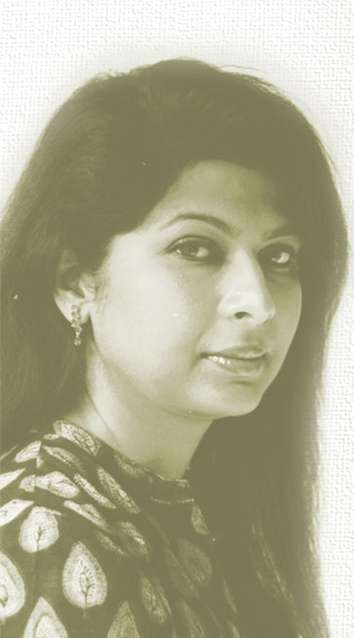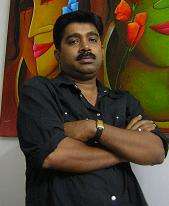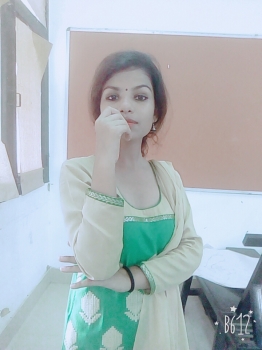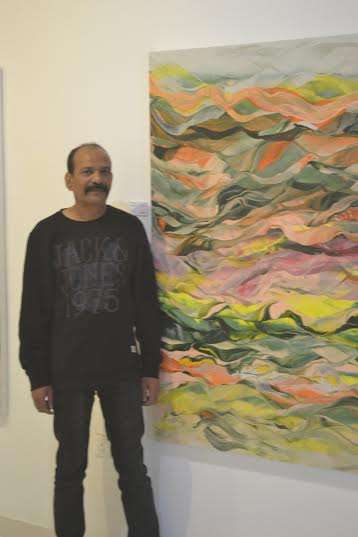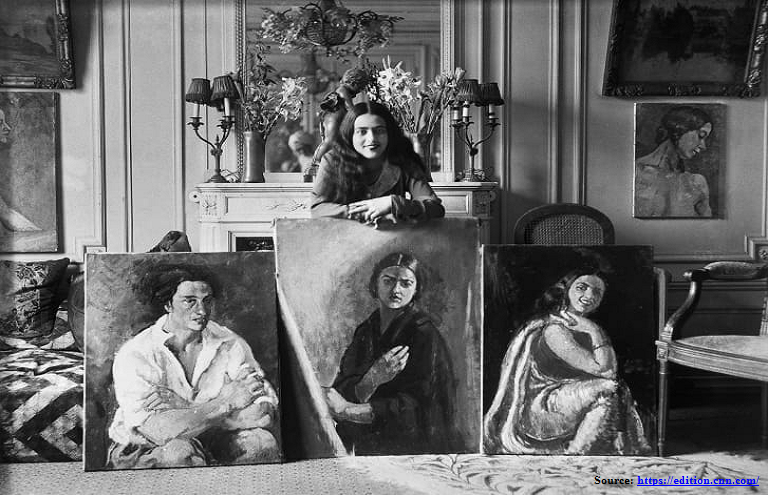
Most of us are familiar with the male artists of Indian modernism. In fact, these male painters occupy the entire art scene of this time the country with a modernist credo so much so that this movement is often regarded as a man’s club. However, there were some pioneering women painters in the twentieth century who overcame the barriers, created remarkable Indian paintings, and pioneered the avant-garde artistic movement of modernism in the subcontinent.
Let’s have a look at eight unsung heroines of Indian modernism:
-
Amrita Sher-Gil
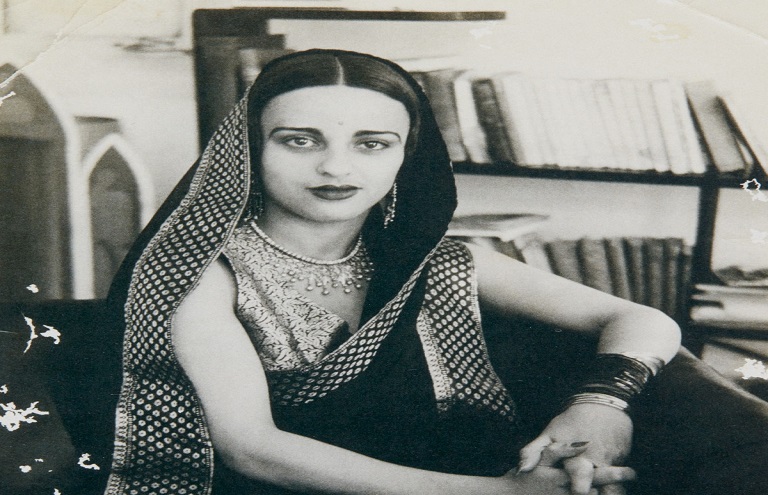
Born in 1913 into a privileged home in Budapest, Hungary, Sher-Gil’s artworks were mostly inspired by her cultural roots with quite a few being powerful self-portraits and her unconventional, bohemian lifestyle. Owing to her aesthetically blending cultural Indian and Western art practices and richly colored paintings, she was affectionately often called the ‘India’s Frida Kahlo.’
Sher-Gil’s early life was spent traversing her bicultural identity (Hungarian Jewish mother and an aristocratic Indian Sikh father), primarily through her art. Although she had her formal training in art in the city of Paris, she steadily gained popularity across Europe, while it was in India that her art thrived. Her earlier works had strong influences of academic realism and other post-impressionist artistic trends of that time; it underwent a drastic transformation after her return to India in 1935. Traveling across the country and reconnecting with the people, she drew inspiration from the traditional Indian painting schools of Mughal and Paharia and also from the beautiful frescoes of rock-cut caves of Ajanta — mesmerized by these classical paintings, she often described as “worth more than the whole Renaissance.” Despite her privileged background, her paintings depicted ordinary people of India— vivid representations of their unglamorous lives. A blend of European and Indian elements represented in her distinctive modern style, Sher-Gil’s creations are unquestionably preeminent Indian modern artworks.
-
B. Prabha
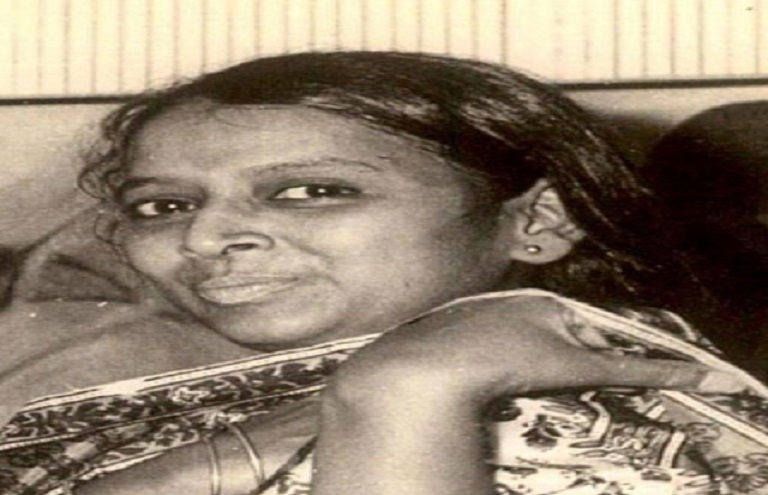
Prabha took to painting at a time when there were hardly any female professional painters in the country. Born in the village of Bela to a middle-class Indian family, near Nagpur in the state of Maharashtra, she went to the Nagpur School of Art and later did her diploma from the Sir JJ School of Art in Mumbai. Inspired by the pioneering female modernist Amrita Sher Gil, Prabha also attempted to paint powerful female subjects, liberated from the gaze, conservative thoughts, ideas, perceptions of the male artist.
Best known for her graceful and easily recognizable figurative oil paintings titled ‘The trauma and tragedy of women’ — pensive depictions of women of rural Indian with natural color palettes, her works are quite popular among art lovers with its prints easily available on almost every online art gallery.
-
Nasreen Mohamedi
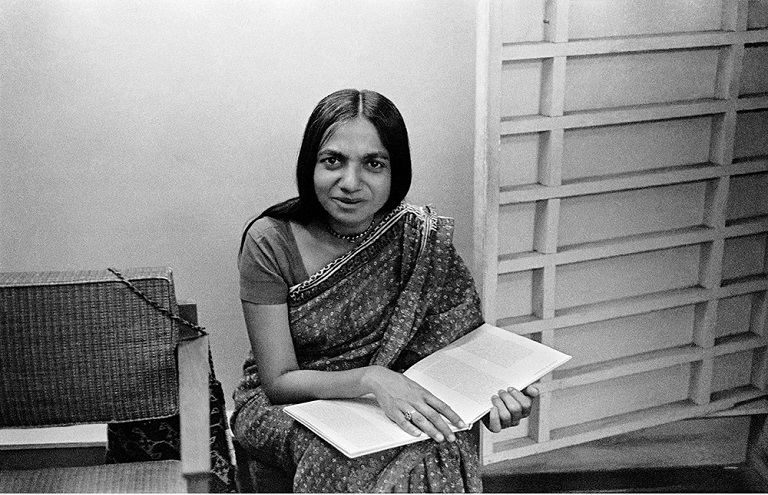
Born in Karachi and brought up in post-Independence India, Mohamedi’s minimalist vocabulary was nurtured by her local and extensive international experiences particularly around Asia and the Middle Eastern countries. Exposure to the highest form of Easian art of calligraphy, textile weaving, Islamic architecture, Zen Buddhism as well as Sufism, significantly shaped her art, both aesthetically and spiritually.
She studied art from Central St. Martin’s in London, and after working at a printmaking atelier in Paris, she later returned back to her homeland in the early 1970s, to join MS University in Baroda. Working alongside many notable Indian artists, she started exploring abstraction and came up with several small-scale, geometric drawings. Stepping away from the established mainstream practice of figurative painting of Indian art, Mohamedi emphasized on monochrome forms and minimal linear gestures. Her intricate and highly detailed line drawings — rendered in brilliant combinations of mediums of ink, graphite, and gouache appear soulful, and in spite of their mundane structure — mostly with suspended diagonal lines, triangles and spheres, they seem dynamic at the same time.
Though suffering from the rare neurological brain disorder, Huntington’s Chorea, Mohamedi did not give up her meticulously geometric style and remarkably managed to continue working with her drawing hand, exploring and experimenting further with a different dimension, line, and shape. Today, her line-drawings are considered the most essential Indian paintings of the modern era, and its copies available on sale on almost every online art gallery.
-
Arpita Singh
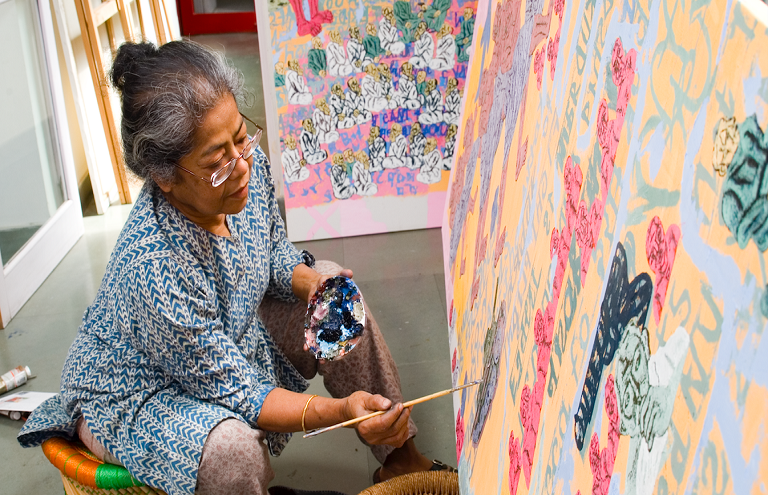
With ideas and objects interacting, often finding connections and acquiring new meaning, canvases of Singh teem with life. Populated with the different depictions and forms of people, animals, trees and flowers and several common and defining motifs of urban life such as guns, cars, and planes, Singh’s works are best described as a carnival of images organized in a subversive fashion.
Born in Kolkata, West Bengal, most of her artworks were inspired by her own background, wherein she depicts her interpretations and emotions about the happenings of the society around and its impact on the women. Though known to be a figurative painter, she also employed different forms of traditional Indian art and aesthetics in her work regularly. The White Chair, The series on Ayesha Kidwai, Durga, My Mother, Krishna are some of the most famous Indian paintings of the twentieth century.
Considered one of the most significant modernists in India, her works were imbued with details, story-line, and minuteness. Apart from drawing inspiration from Mughal miniaturist painting, Singh has also been influenced by her Bengali heritage and culture — vibrant and colorful Kantha embroidery, Kalighat narrative scrolls, and several other folk-art practices. Though most of Singh’s childhood was spent in pre-partition West Bengal, she has since lived and worked in the region of Delhi. Working at the Weaver’s Service Centres of Kolkata as well as in New Delhi, gave her the opportunity to explore the traditional techniques of art forms practiced across the country and significantly contributed in shaping her highly individualistic style.
-
Nilima Sheikh
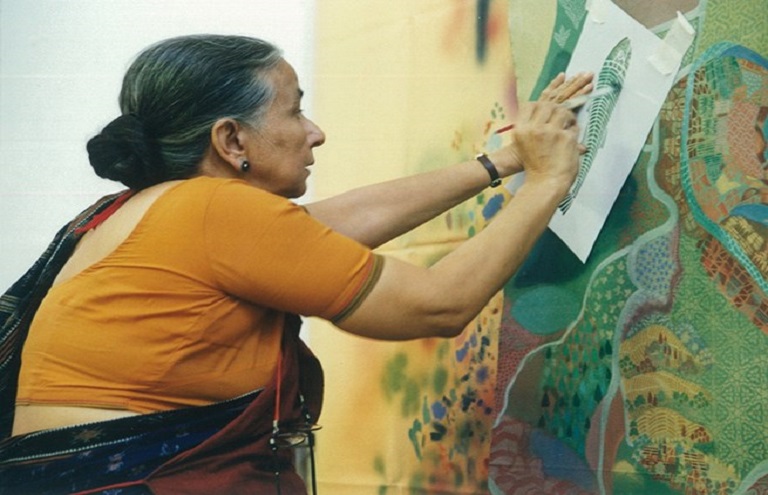
Based in Baroda, Nilima Sheikh has done extensive research about traditional Indian art forms and gradually created her own distinctive visual language based completely on the vocabulary of the traditions of Indian painting for her pictorial narratives. Born in Delhi, Sheikh studied history at the University of Delhi and later did her Masters in Fine Arts from the popular MS University, Baroda in 1971 under the guidance of the renowned artist K.G. Subramanyan.
Her academic background formed the foundation of her art, which explores ancient and modern history. Fusing poetry, folk narratives and elements of Sufi mysticism, her portrayals of displacement and patriarchal violence are one of a kind. Post 2002, Sheikh has focused primarily on depicting the subjects related to India’s turbulent social issues such as the Gujarat riots and the constantly changing political climate. Apart from being an eminent Indian painter, Sheikh has also been an outspoken conservationist of artistic heritage.
-
Nalini Malani
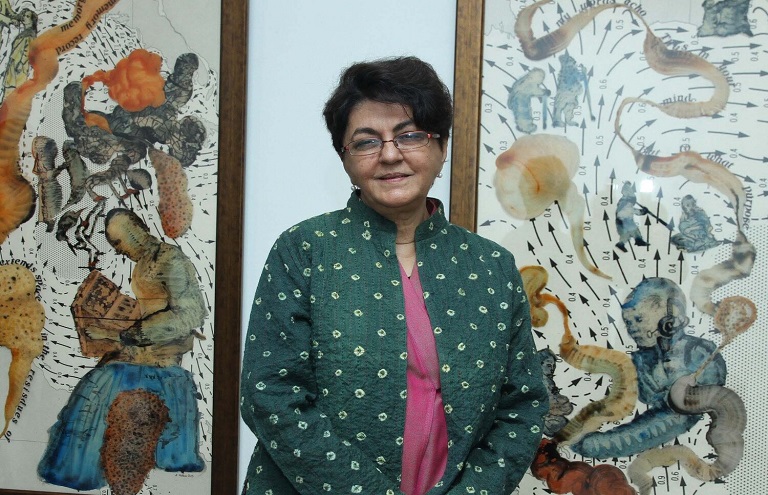
Raised during the aftermath of the Partition, art practices of Nalini Malani have imbibed strong influences of that time and her experiences. Though born in Karachi, she has spent her entire life in India — initially as a refugee in Kolkata, and later as a student of Fine Arts in Sir JJ School of Art in the city of Mumbai. Her paintings are an exploration of her life experiences including memory, trauma, resistance, gendered violence, and mythology, usually through the theoretical lens of feminism.
Regarded as a principal force in bringing both Indian paintings and global art into a contemporary idiom, she is widely acclaimed for her experiments with reverse painting, film, performance arts, projected animation, video, shadow theatres, and even ephemeral murals. Employing her modernist ideas, post-1980s she created politically charged works that have been playful both in terms of medium and technique. A pioneer and an outspoken feminist, Malani organized the first all-women artists’ show in India in 1985. It was her untiring efforts and hard work that made her the first Asian woman to receive the Arts & Culture Fukuoka Prize in 2013, with the committee recognizing her as one of the world’s most influential living artists.
-
Madhvi Parekh
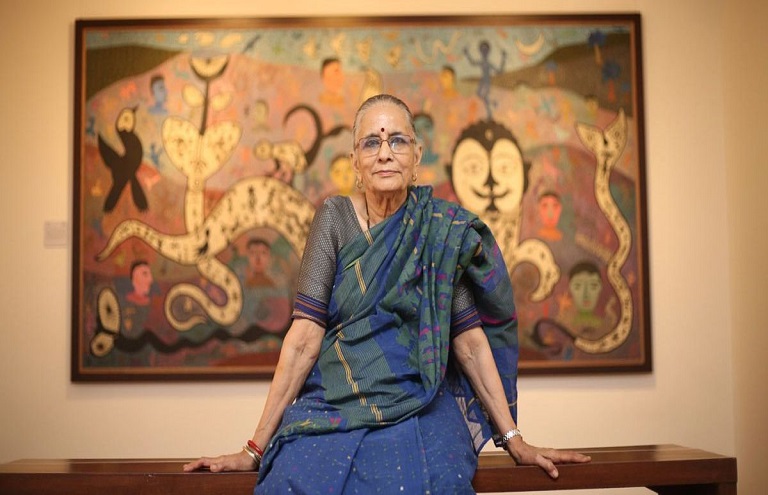
Born in the city of Ahmedabad in Gujarat, Madhvi Parekh’s work underlines the rich heritage of traditional folk art of her homeland, such as threadworks and pichwai painting in her own distinctive style. Though Parekh's early works were the depiction of her childhood narratives and folk stories, later her colorful, surreal and deceptively plain Indian paintings reflected her rural influences in her stylized folk art, simultaneously drawing inspiration from artistic influences of the Western painters, ranging from the creations of Paul Klee, Clemente to Henri Matisse. However, her themes always revolved around images that had an impact on her
What’s most interesting about this self-taught artist is that she never had an aspiration to become a painter, it was after taking inspiration from her husband Manu Parekh, an artist from the prestigious JJ School of Art, that Parekh took up art.
Refusing to accept the tension between vernacular and the modern, she developed her unique visual vocabulary to interpret the traditional folk art in a new modern India with freshness, flexibility, spontaneity, and a strong sense of design at the same time.
Wrap Up
Having broken away from the dominant and established figurative-narrative art practices and norms, these women pioneered the trajectory of non-representational and non-objective art in the country. Undoubtedly their works remain a significant part of the Indian paintings of the modern era.
Don’t forget to share your views about the works of these female Indian modernists who fought stereotypes and several other biases to make their mark in the male-dominated art scene in the country.












